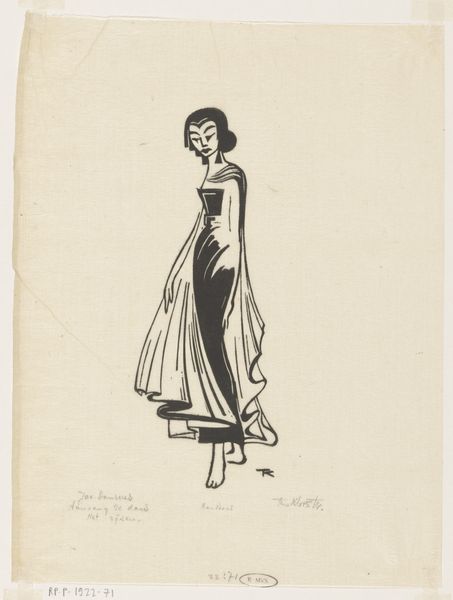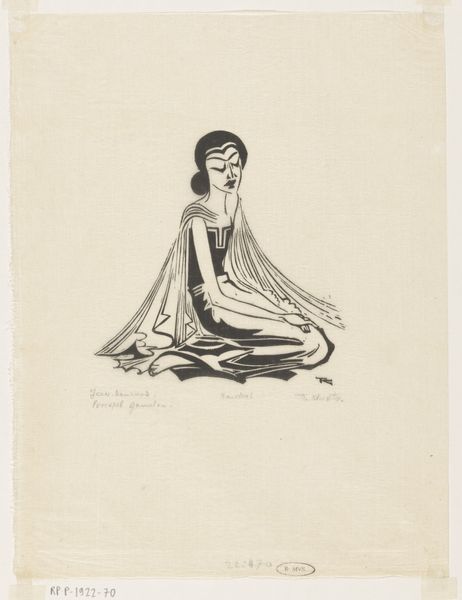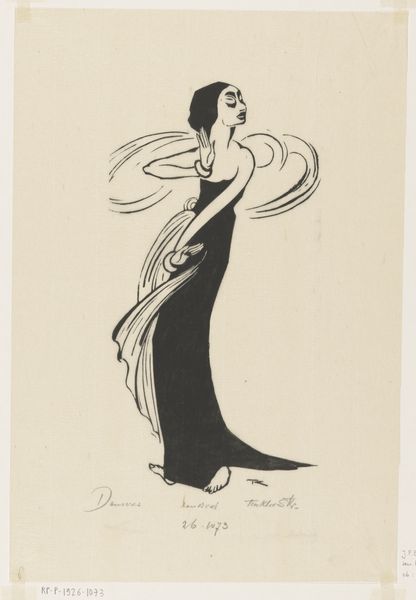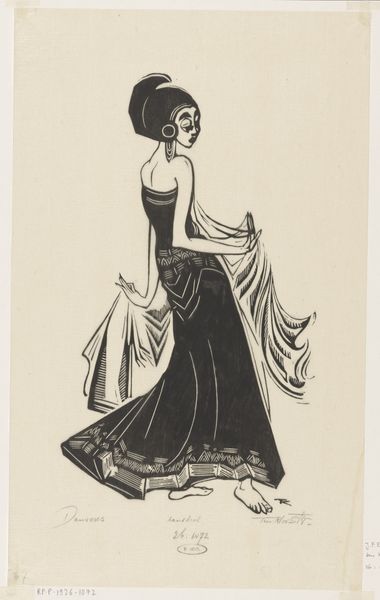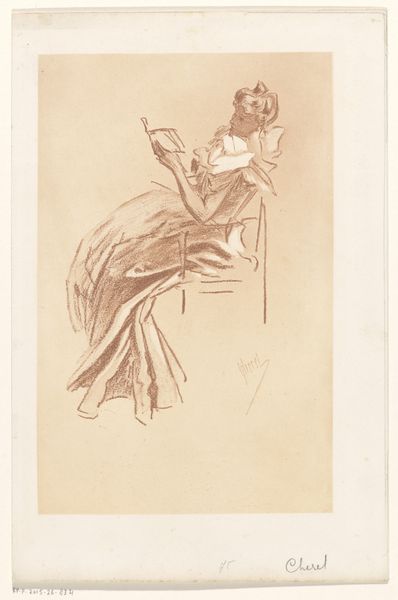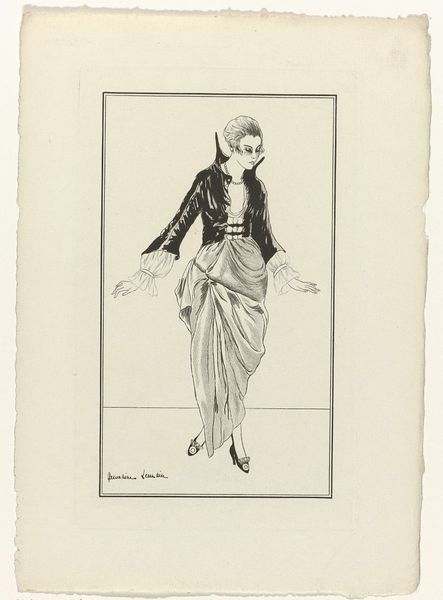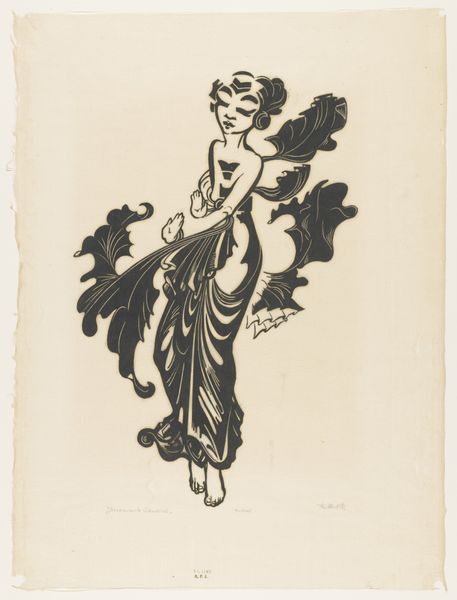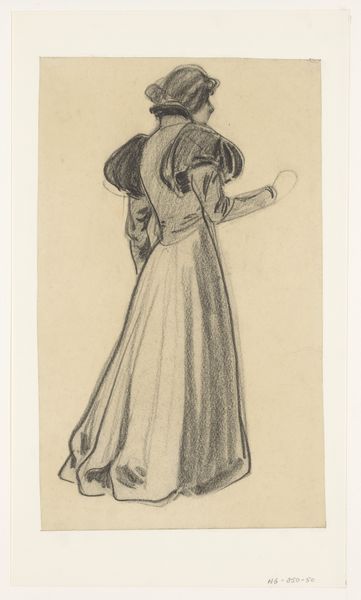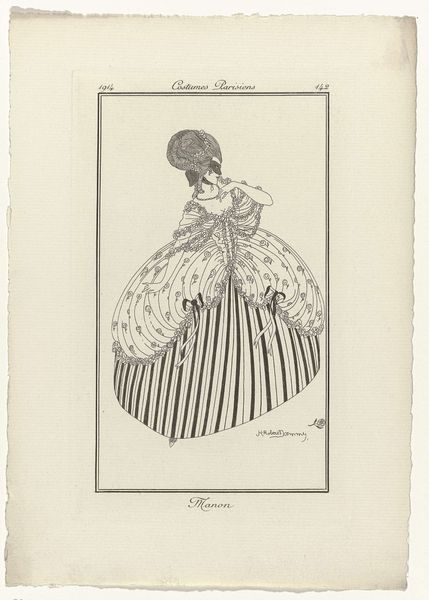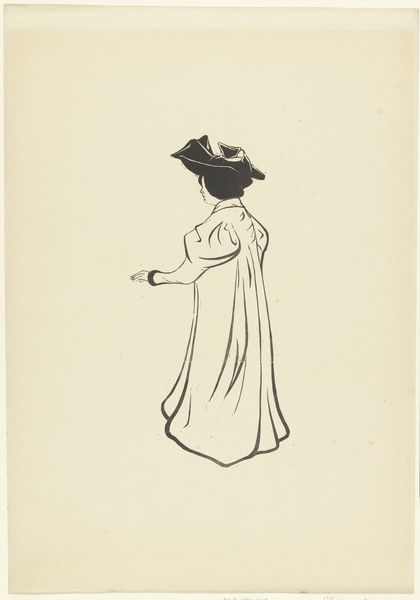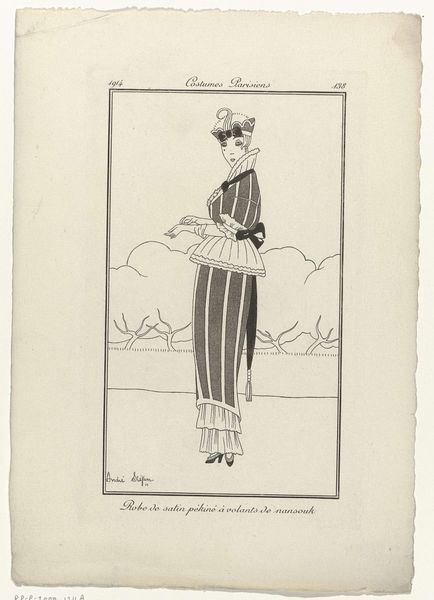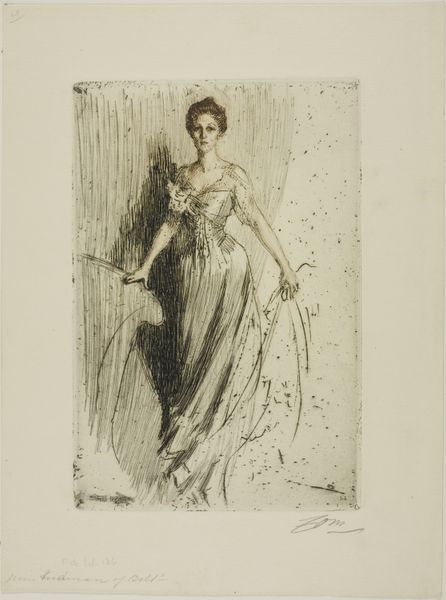
graphic-art, print, woodcut
#
art-deco
#
graphic-art
# print
#
figuration
#
woodcut
Dimensions: height 302 mm, width 230 mm
Copyright: Rijks Museum: Open Domain
Curator: This is "De Dans" created in 1921 by Johannes Frederik Engelbert ten Klooster. It's a woodcut, part of the graphic arts, demonstrating the art deco style. Editor: Immediately, I'm struck by its dynamism. The composition is simple—black figure on a white background—but the lines have such flow! It feels like frozen motion. Curator: Absolutely. What I find fascinating is how the piece reflects the changing role of women during the roaring twenties. This dancer, draped in what seems like luxurious fabric, suggests a newfound freedom and embrace of personal expression that women experienced post-war. The simplification and stylization in her silhouette are typical of Art Deco, and these served to modernize visual narratives that challenge traditionally patriarchal constraints by presenting women as agents of spectacle. Editor: Yes, and the stark contrast of black and white enhances the stylization and emphasizes form. Observe the swirling lines that delineate her dress and the negative space between her and the edges of the frame. Semiotically, that blank space contributes as much to the composition as the dancer herself; each stroke communicates the luxury of leisure, wealth, and a life without traditional limits. It’s an economy of line that speaks volumes. Curator: It also brings to mind the burgeoning global trade routes that influenced design and the avant-garde's keen awareness of the Other in an era of rapid modernization. We must consider the orientalism, the subtle yet unmistakable fascination with perceived Eastern aesthetics—and how women in this cultural framework would have had unique struggles navigating traditional life while also confronting rapid shifts and gender-related norms of behavior in general during the inter-war era. Editor: It's a sophisticated and powerful statement captured in an apparently simple form, don't you agree? I admire the artist's understanding of design. Curator: Indeed, "De Dans" presents an idealized woman, confident in a moment of profound transformation. Editor: I now have a completely altered perspective, seeing far more significance in the design now that you've brought social context into it. It all really shines!
Comments
No comments
Be the first to comment and join the conversation on the ultimate creative platform.
